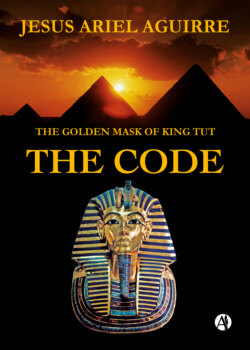Читать книгу The Golden Mask of King Tut The Code - Jesús Ariel Aguirre - Страница 20
На сайте Литреса книга снята с продажи.
Egyptian hieroglyphs
ОглавлениеAnne asks about the Hieroglyphs and if it is easy to translate them. Thomas smiles and comments that reading in a row, “like Indiana Jones” , the inscriptions on the walls of the pharaonic temples and tombs is complicated. First, you will have to know the Gardiner list, the basic dictionary of Egyptian writing, which collects 743 different hieroglyphs classified into 26 subgroups (deities, parts of the body, man and his occupations, animals ...). In it are only the most common, those that were used during the Middle Kingdom.
In the Greco-Roman period the total number came to exceed 6,000, which does not mean that it was better written in Cleopatra’s time , but that more words were used to say the same thing. It was also a resource used by the Egyptian priests to hide their secrets from the new rulers of the country, the Greeks and the Romans.
The word “hieroglyph” comes from two Greek terms: (hierós) which means “sacred”, and (glýphein) which means “writing”. Therefore, we can define hieroglyphics as “sacred writing”. Hieroglyphic writing was used only by high officials of the Egyptian governments (royal family, scribes, and priests) in official inscriptions in temples and funerary monuments, in administrative and legal documents, and in literary works.
It should be noted within the Egyptian culture the importance of the funerary literature that has come down to us through the Pyramid Texts (Old Kingdom, hieroglyphic writing on stone in the pyramid of King Unas, Dynasty V, c. 2350 BC), the Sarcophagus Texts (hieroglyphic writing on wood, engraved or painted, Middle Kingdom, c. 2050 - 1750 BC) and the Book of the Dead (hieroglyphic writing on papyrus, New Kingdom, c. 1550 BC. - 1070 BC). The change in support for hieroglyphic writing also allows us to glimpse the popularization of funeral rites and writing, in principle, reserved for the great figures of this civilization.
It was Champollion who in September 1822 found the definitive key to reading the ancient Egyptian inscriptions: the hieroglyphic system is at the same time figurative (1), symbolic (2) and phonetic (3). The hieroglyph that represents a duck, for example, admits several interpretations:
(1) .- Sometimes a duck is a duck is a duck. In this case, the duck sign is simply translated as “duck.”
(2) .- Other times, such as when it goes next to the sign that represents the sun (the god Ra) and in the company of the name of a pharaoh, its meaning is very different: “Son of Ra”. The duck, then, can also be translated as “son”.
(3) .- The duck also works as a biliterate phonogram: S + A, a sound that can be used to write other words without any relation to the ducks or the children. The phonograms are representations of sounds, letters or groups equivalent to two, three or more consonants.
